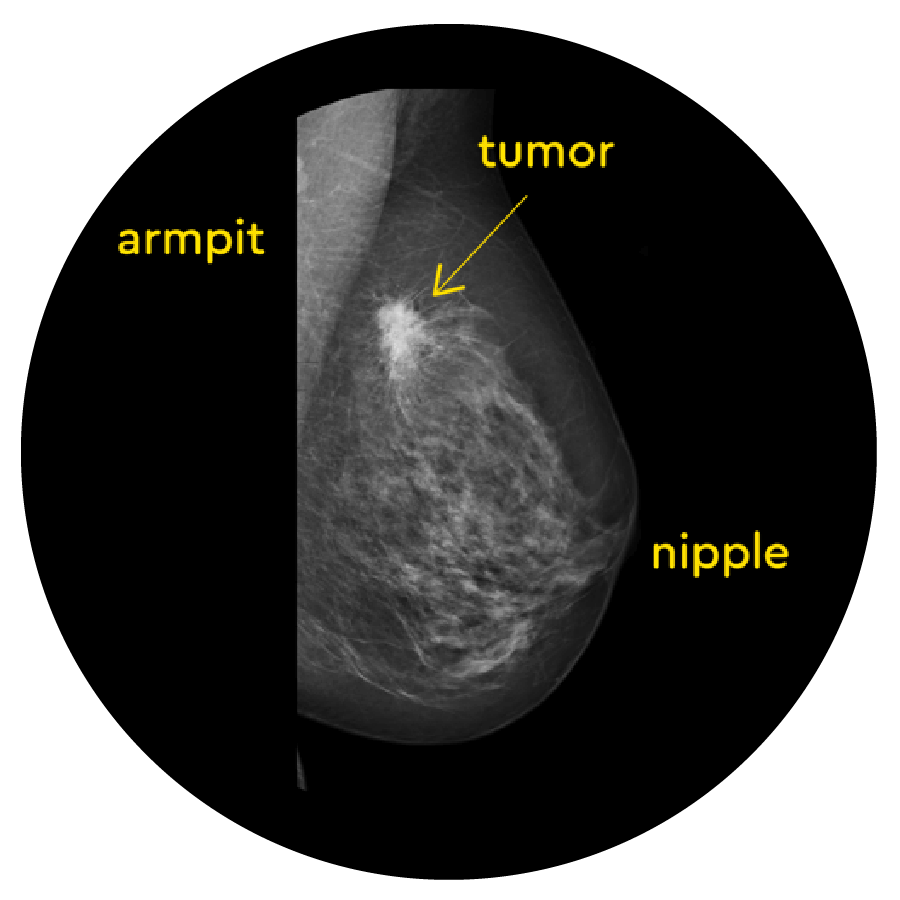Mammogram Tips
A mammogram can find a cancerous lump before it can be felt. When to start mammograms (usually after age 40), and how often to do them, depends on your individual risk factors. Talk to your doctor, and download our Know Your Lemons® app to get started.
How Mammograms Work
A mammogram is an x-ray of the breast. It is one way to look inside the breast for tumors (“calcifications” or “masses”), which show as white spots on an x-ray.
An x-ray cannot see very well through dense breast tissue, but it can see through fat. Breasts don’t normally turn to fat until after age 40. Because of this, mammograms work best after you turn 40. If you are under age 40, ask about ultrasound as an option.
If cancer is present in the breast, 8 times out of 10 a mammogram can find it.
Unfortunately, not everything shows up in x-rays. Tumors may be too small, only visible in certain angles, or blend into their surroundings. Inflammatory breast cancer is one example of breast cancer that doesn’t show up in mammograms.
Screening or Diagnostic?
Screening mammograms are done when no symptom is present. An x-ray is taken of each breast at two angles.
Diagnostic mammograms are done when there is a symptom that is being investigated. This means the doctor can request additional angles to get a more specific view of the area in question.
If you think you have a symptom, tell your health professional to make sure you get the angles you need.
Have dense breast tissue?
Your mammogram report will tell you your breast density. When breast tissue is dense (not fat), an x-ray has a harder time seeing lumps in the tissue:
If you have dense breasts, other options can help you screen for breast cancer. These are 3-D mammograms, an ultrasound (if you have a specific area of concern, or if not, Automated Whole Breast Ultrasound), or a breast MRI.
How to Prepare for Your Mammogram
Don’t wear deodorants, powders, or lotions. They can look misleading if they are on your armpits or breasts.
Book your appointment with an FDA certified facility.
Schedule it when your breasts are not so tender. A few days after your period is usually best. No period? Pick any day.
You’ll be wearing a gown. Leave the jumpsuit at home and wear a top that is easy to remove.
Take a pain reliever like Ibuprofen an hour before. Mammograms feel similar to getting your blood pressure taken and may pinch a bit.
Bring previous x-rays if you have them. Having multiple mammograms to compare makes it easier to spot changes.











